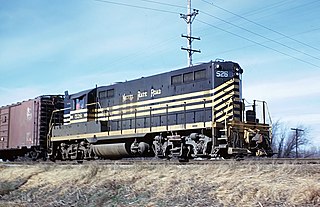
The New York, Chicago and St. Louis Railroad, abbreviated NYC&St.L, was a railroad that operated in the mid-central United States. Commonly referred to as the "Nickel Plate Road", the railroad served parts of the states of New York, Pennsylvania, Ohio, Indiana, Illinois, and Missouri. Its primary connections occurred in Buffalo, Chicago, Cincinnati, Cleveland, Indianapolis, St. Louis, and Toledo.
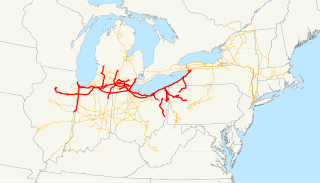
The Lake Shore and Michigan Southern Railway, established in 1833 and sometimes referred to as the Lake Shore, was a major part of the New York Central Railroad's Water Level Route from Buffalo, New York, to Chicago, Illinois, primarily along the south shore of Lake Erie and across northern Indiana. The line's trackage is still used as a major rail transportation corridor and hosts Amtrak passenger trains, with the ownership in 1998 split at Cleveland between CSX to the east, and Norfolk Southern in the west.
The Wheeling and Lake Erie Railway is a Class II regional railroad that provides freight service, mainly in the U.S. state of Ohio. It took its name from the former Wheeling and Lake Erie Railway, most of which it bought from the Norfolk and Western Railway in 1990.
The Cleveland Short Line Railway is a freight bypass around southern Cleveland, Ohio, in the United States. A quasi-independent railroad organized by major shareholders of the Lake Shore and Michigan Southern Railway, the shortline was intended to allow the Lake Shore and Michigan Southern to bypass the congested railroads in downtown Cleveland. The Cleveland Short Line has had a succession of owners, and is currently part of CSX Transportation.
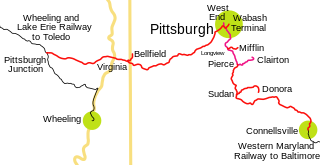
The Pittsburgh and West Virginia Railway was a railroad in the Pittsburgh, Pennsylvania and Wheeling, West Virginia, areas. Originally built as the Wabash Pittsburgh Terminal Railway, a Pittsburgh extension of George J. Gould's Wabash Railroad, the venture entered receivership in 1908 and the line was cut loose. An extension completed in 1931 connected it to the Western Maryland Railway at Connellsville, Pennsylvania, forming part of the Alphabet Route, a coalition of independent lines between the Northeastern United States and the Midwest. It was leased by the Norfolk and Western Railway in 1964 in conjunction with the N&W acquiring several other sections of the former Alphabet Route, but was leased to the new spinoff Wheeling and Lake Erie Railway in 1990, just months before the N&W was merged into the Norfolk Southern Railway.
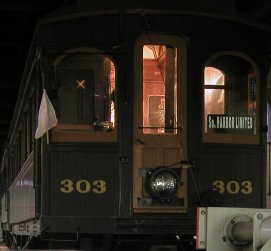
Cleveland has been and continues to be deeply rooted in railroad history.
The CL&W Subdivision is a railroad line owned and operated by CSX Transportation in the U.S. state of Ohio. The line runs from a junction with the New Castle Subdivision at Sterling northwest to Lorain along a former Baltimore and Ohio Rail Road line. It junctions with the Cleveland Subdivision at Lester and the Greenwich Subdivision at Grafton.

The Central New York Railroad is a shortline railroad operating local freight service along ex-Southern Tier Line trackage in the U.S. states of New York and Pennsylvania. The line begins at Port Jervis, following the Delaware River to Deposit and the Susquehanna River from Lanesboro, where it crosses the Starrucca Viaduct, to Binghamton. It is a subsidiary of the Delaware Otsego Corporation, which also owns the New York, Susquehanna and Western Railway, operator of through trains over the line.
The Wheeling and Lake Erie Railway was a Class I railroad mostly within the U.S. state of Ohio. It was leased to the New York, Chicago and St. Louis Railroad in 1949, and merged into the Norfolk and Western Railway in 1988. A new regional railroad reused the Wheeling and Lake Erie Railway name in 1990 when it acquired most of the former W&LE from the N&W.
The following is a brief history of the North American rail system, mainly through major changes to Class I railroads, the largest class by operating revenue.
The Ashland Railway is a Class III railroad shortline railroad operating within North Central Ohio and based in Mansfield, Ohio. Since its inception in 1986, Ashland Railway has grown to provide service 24 hours a day 7 days a week along 55 miles of track in two segments, to industries within Ashland, Huron, Richland and Wayne counties. ASRY interchanges with the Norfolk Southern Railway in Mansfield, the Wheeling & Lake Erie Railway in Plymouth and CSX Transportation (CSXT) in Willard. The line runs southeast from Willard through Plymouth and Shelby, to Mansfield. From Mansfield the line runs northeast through Ashland and terminates in West Salem.
The Newburg & South Shore Railroad is a railroad that operates in Cleveland, Ohio, in the United States on 13 miles (21 km) of track. It opened in 1904 to service steel mills in the Cleveland area.

The Cleveland, Painesville and Ashtabula Railroad (CP&A), also known informally as the Cleveland and Erie Railroad, the Cleveland and Buffalo Railroad, and the Lake Shore Railroad, was a railway which ran from Cleveland, Ohio, to the Ohio-Pennsylvania border. Founded in 1848, the line opened in 1852. The railroad completed the rail link between Buffalo, New York, and Chicago, Illinois.
The Jamestown and Franklin Railroad (J&F) was a shortline railroad which operated in the U.S. states of Ohio and Pennsylvania. Established in 1862, its main line ran from Jamestown, Pennsylvania, to Oil City, Pennsylvania. A branch line connected Jamestown with Ashtabula, Ohio. The railroad leased itself to the Lake Shore and Michigan Southern Railway in 1864 for 20 years. A 1909 consolidation with three other railroads created the Jamestown, Franklin and Clearfield Railroad, and ended the J&F's existence.

The Detroit, Monroe and Toledo Railroad (DM&T) was a shortline railroad which operated in the U.S. states of Michigan and Ohio. Opened in 1856, its main line ran from Detroit, Michigan, to Toledo, Ohio. The railroad leased itself to the Michigan Southern and Northern Indiana Railroad (MS&NI) in 1856. A 1914 merger which created the New York Central Railroad led to the DM&T's consolidation into the new road, ending its existence.
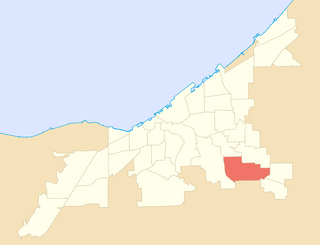
Union–Miles Park is a city planning area on the Southeast Side of Cleveland, Ohio, in the United States. The neighborhood draws its name from Union Avenue, and Miles Park in its far southwest corner.
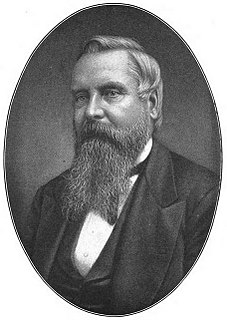
Henry Chisholm was a Scottish American businessman and steel industry executive during the Gilded Age in the United States. A resident of Cleveland, Ohio, he purchased a small, struggling iron foundry which became the Cleveland Rolling Mill, one of the largest steel firms in the nation. He is known as the "father of the Cleveland steel trade".

The Valley Railway was a shortline railroad which operated between the city of Cleveland and small town of Zoarville in the state of Ohio in the United States. The railroad was founded in 1871, but the first segment of track did not open until 1880 and the line was not completed until 1884. The Baltimore and Ohio Railroad (B&O) obtained a controlling interest in the Valley Railway in 1890. The railroad went bankrupt in 1895, at which time it was reorganized as The Cleveland Terminal and Valley Railroad Company (CT&V). The B&O took over operation of the CT&V in 1909, and the company was merged with the B&O in 1915.

The Cleveland and Mahoning Valley Railroad (C&MV) was a shortline railroad operating in the state of Ohio in the United States. Originally known as the Cleveland and Mahoning Railroad (C&M), it was chartered in 1848. Construction of the line began in 1853 and was completed in 1857. After an 1872 merger with two small railroads, the corporate name was changed to "Cleveland and Mahoning Valley Railroad". The railroad leased itself to the Atlantic and Great Western Railway in 1863. The C&MV suffered financial instability, and in 1880 its stock was sold to a company based in London in the United Kingdom. A series of leases and ownership changes left the C&MV in the hands of the Erie Railroad in 1896. The CM&V's corporate identity ended in 1942 after the Erie Railroad completed purchasing the railroad's outstanding stock from the British investors.












